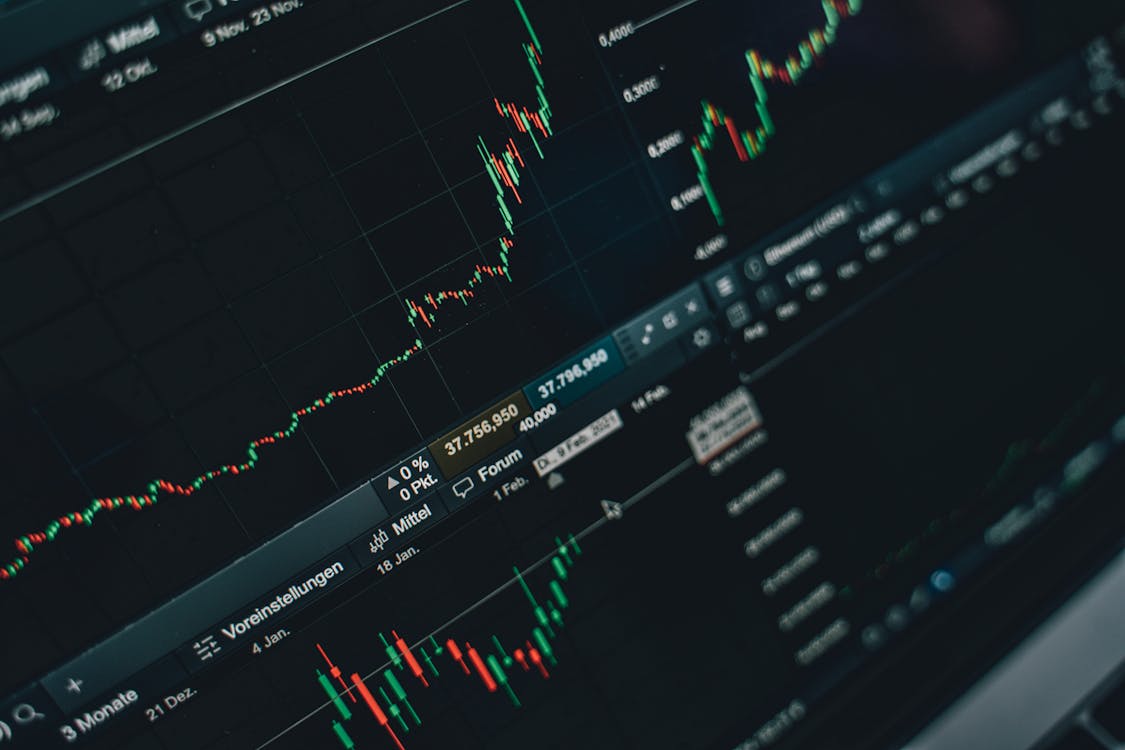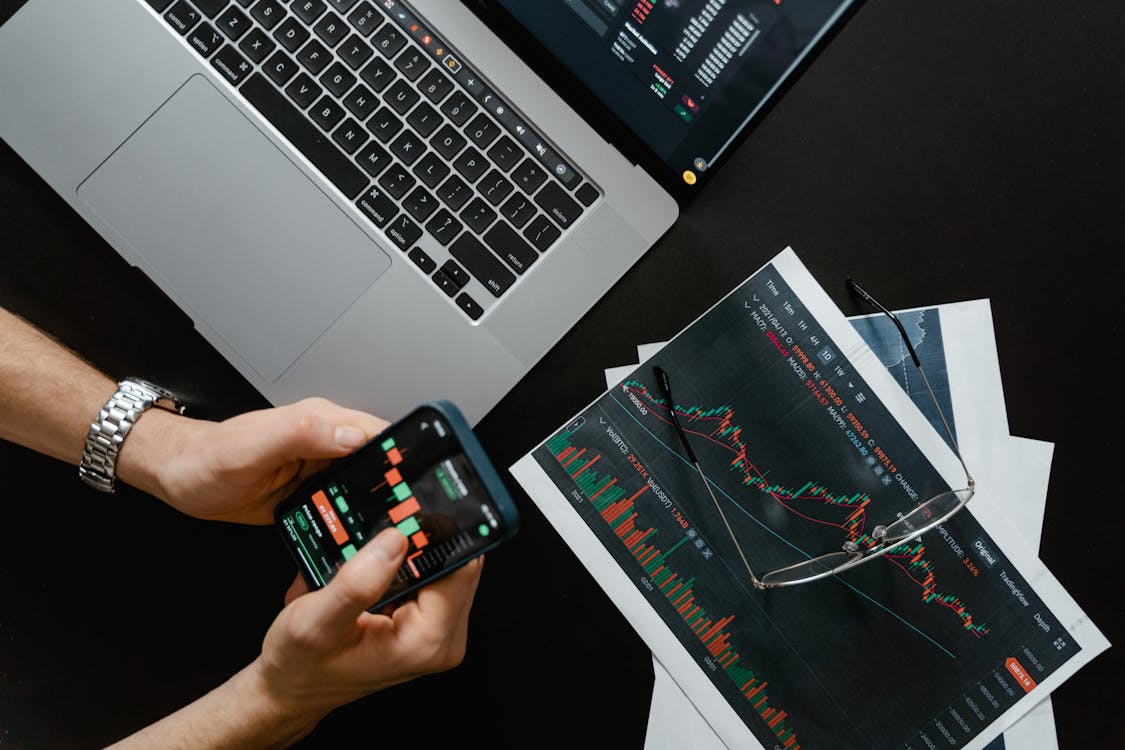
Today's trading environment blends traditional analysis with cutting-edge technology
The Great Divide: My Journey Through Both Worlds
I remember my first foray into trading back in 2014. I was firmly in the fundamental analysis camp, spending hours dissecting balance sheets, earnings reports, and industry trends. My desk was littered with financial statements, and I prided myself on understanding a company's intrinsic value down to the last decimal point. Then came my introduction to technical analysis—a world of charts, patterns, and indicators that seemed to operate on an entirely different wavelength.
Over the years, I've come to appreciate that the fundamentals vs technicals debate isn't about which approach is "right," but rather about understanding their respective strengths, limitations, and how they complement each other in today's technology-driven markets. The rise of algorithmic trading, AI-powered analysis, and real-time data processing has fundamentally altered how both approaches are applied.
In this comprehensive guide, I'll share my honest perspective on fundamental and technical analysis, drawing from my personal trading experiences, successes, and failures. We'll explore how modern technology is reshaping both methodologies and why the most successful traders I know have learned to integrate elements of both approaches into their strategies.
Understanding Fundamental Analysis: The Business Investor's Approach
Fundamental analysis is essentially the practice of determining a security's intrinsic value by examining related economic, financial, and other qualitative and quantitative factors. Think of it as playing the role of a business owner rather than a trader. When I analyze a company fundamentally, I'm trying to answer one core question: "Is this business actually worth what the market is pricing it at?"

Fundamental analysis involves deep research into company financials and industry conditions
Key Components of Fundamental Analysis
From my experience, effective fundamental analysis rests on three pillars:
- Economic Analysis: Understanding the broader economic environment including interest rates, inflation, GDP growth, and employment data. I've found that macroeconomic trends often dictate market direction more than individual company performance.
- Industry Analysis: Evaluating the specific industry's growth prospects, competitive landscape, regulatory environment, and technological disruptions. Some of my biggest wins came from identifying industries poised for growth before the broader market caught on.
- Company Analysis: The most granular level, involving deep dives into financial statements, management quality, business model sustainability, and competitive advantages. This is where you separate truly great businesses from merely good ones.
Essential Fundamental Metrics I Actually Use
While textbooks list dozens of ratios, I've found these to be the most practical in my trading:
| Metric | What It Measures | My Personal Threshold |
|---|---|---|
| P/E Ratio | Price relative to earnings | Varies by industry, but I'm wary of >30 unless growth justifies it |
| PEG Ratio | P/E relative to growth rate | <1 indicates potential undervaluation |
| Debt-to-Equity | Financial leverage | Prefer <0.5, but context matters |
| ROE/ROIC | Management efficiency | Consistently >15% is excellent |
| Free Cash Flow Yield | Cash generation ability | >5% is attractive, >8% is compelling |
Pros of Fundamental Analysis
- Focuses on long-term value rather than short-term price movements
- Provides a margin of safety by identifying undervalued assets
- Helps understand the actual business behind the stock
- Less prone to market noise and emotional trading
- Works well for buy-and-hold investment strategies
Cons of Fundamental Analysis
- Time-intensive research process
- Markets can remain irrational longer than you can remain solvent
- Doesn't provide precise entry/exit timing
- Valuation is subjective and can vary widely between analysts
- Less effective in strongly trending or momentum-driven markets
Understanding Technical Analysis: The Market Psychologist's Toolkit
Technical analysis takes a completely different approach by focusing purely on price action, volume, and market statistics. Instead of asking "what should this be worth?", technical analysts ask "where is the market likely to go based on historical patterns and current momentum?"
My transition to incorporating technical analysis wasn't easy. Initially, I dismissed it as financial astrology—finding patterns where none existed. But after witnessing how consistently certain price levels and patterns influenced market behavior, I began to appreciate technical analysis as the study of market psychology made visible through price charts.

Technical analysis focuses on price patterns, trends, and market psychology
Core Principles of Technical Analysis
Technical analysis operates on three foundational principles that I've found consistently relevant:
- Market Action Discounts Everything: All known information is already reflected in the price. This was a difficult pill for me to swallow as a fundamental analyst, but I've seen countless examples where stocks moved before news became public.
- Prices Move in Trends: Markets exhibit persistent directional movements that tend to continue until clear reversal signals appear. Identifying and riding these trends has been one of my most profitable strategies.
- History Tends to Repeat Itself: Market participants react in consistent patterns to similar situations due to collective psychology. I've personally observed the same chart patterns playing out across different markets and timeframes.
Technical Indicators I Actually Rely On
After testing dozens of indicators, these are the ones that have proven most valuable in my trading:
- Moving Averages: I use the 50-day and 200-day simple moving averages to identify trend direction and potential support/resistance levels. The "golden cross" and "death cross" have been surprisingly reliable longer-term signals.
- Relative Strength Index (RSI): My go-to momentum oscillator for identifying overbought and oversold conditions. I pay attention to divergences between price and RSI, which often precede reversals.
- Volume Analysis: Volume confirms price movements. Breakouts on high volume tend to be more reliable, while low-volume rallies often fizzle out.
- Support and Resistance: These psychological price levels have worked remarkably well across different market conditions. I've learned to respect these levels until they're clearly broken.
Pros of Technical Analysis
- Provides specific entry and exit points
- Works across all timeframes and markets
- Helps manage risk through clear stop-loss levels
- Adapts quickly to changing market conditions
- Can be automated and backtested systematically
Cons of Technical Analysis
- Can generate false signals, especially in choppy markets
- Subject to interpretation - two analysts may see different patterns
- Doesn't account for fundamental changes in value
- Self-fulfilling prophecies can distort patterns
- Requires discipline to follow signals without second-guessing
The Technology Revolution: How AI and Algorithms Are Reshaping Analysis
The most significant development in my trading career has been the rapid advancement of trading technology. What was once a battle between fundamental and technical analysis has evolved into a landscape where both approaches are being supercharged by artificial intelligence, machine learning, and sophisticated algorithms.
I've personally witnessed how technology has leveled the playing field in some areas while creating new advantages for well-funded institutions in others. The key is understanding how to leverage these tools rather than being displaced by them.

AI and machine learning are transforming both fundamental and technical analysis
Technology-Enhanced Fundamental Analysis
Modern fundamental analysis has been revolutionized by several key technological developments:
- Natural Language Processing (NLP): AI systems can now read and analyze thousands of earnings reports, news articles, and regulatory filings in seconds, identifying subtle patterns and sentiment shifts that would take human analysts weeks to uncover.
- Alternative Data Analysis: Hedge funds now analyze satellite images of parking lots, credit card transactions, and social media trends to gain insights into company performance before official reports are released.
- Automated Valuation Models: Sophisticated algorithms can process dozens of valuation methodologies simultaneously, providing more robust and less biased assessments of fair value.
Technology-Enhanced Technical Analysis
Technical analysis has undergone an even more dramatic transformation:
- Algorithmic Pattern Recognition: Machine learning models can identify complex chart patterns across multiple timeframes that would be nearly impossible for humans to spot consistently.
- High-Frequency Trading (HFT): Algorithms execute trades in milliseconds based on tiny price discrepancies, creating a completely different market dynamic.
- Quantitative Analysis: Complex mathematical models identify statistical edges in market behavior, often blending elements of both fundamental and technical approaches.
My Personal Experience with Trading Technology
When I first incorporated algorithmic tools into my trading, I made the common mistake of over-optimizing my strategies. I'd create systems that performed perfectly on historical data but failed miserably in live markets. The key lesson I learned was that robust trading systems work across various market conditions, not just the specific period you backtested.
Today, I use technology as an enhancement to my decision-making rather than a replacement. AI-powered screening helps me identify potential opportunities faster, but I still apply human judgment to the final analysis. The most successful approach I've found combines the pattern recognition power of machines with the contextual understanding and intuition of an experienced trader.
Fundamentals vs Technicals: My Direct Comparison
After years of using both approaches, I've developed a clear understanding of when each method shines and when it falls short. The table below summarizes my practical observations:
| Aspect | Fundamental Analysis | Technical Analysis |
|---|---|---|
| Time Horizon | Long-term (months to years) | Short to medium-term (days to months) |
| Data Focus | Financial statements, economic data | Price charts, volume, indicators |
| Primary Goal | Determine intrinsic value | Identify trend direction and timing |
| Best Market Conditions | Range-bound or undervalued markets | Trending markets with clear momentum |
| Risk Management | Margin of safety in valuation | Stop-loss orders, position sizing |
| Technology Integration | AI for data processing, sentiment analysis | Algorithmic trading, pattern recognition |
| Psychological Demands | Patience, conviction during drawdowns | Discipline to follow signals, avoid emotion |
The Hybrid Approach: How I Combine Both Methods
After years of experimenting, I've found that the most effective approach combines elements of both fundamental and technical analysis. Here's the framework I've developed and refined through trial and error:

The most successful traders often blend both analytical approaches
My Step-by-Step Hybrid Strategy
- Fundamental Screening: I start with fundamental criteria to create a watchlist of quality companies. My filters typically include consistent revenue growth, reasonable valuation metrics, strong balance sheets, and competitive advantages.
- Technical Timing: Once I've identified fundamentally sound companies, I use technical analysis to determine optimal entry points. I wait for the stock to show strength relative to the market and approach key support levels.
- Position Sizing Based on Conviction: The size of my position depends on both the strength of the fundamental case and the clarity of the technical setup. Strong fundamentals with perfect technical alignment get larger allocations.
- Risk Management Blend: I use technical levels for stop-loss placement but fundamental deterioration as a secondary exit signal. If the company's story changes fundamentally, I'll exit regardless of the technical picture.
- Hybrid Exit Strategy: I take partial profits at technical resistance levels while letting my core position run as long as the fundamental thesis remains intact.
"The hybrid approach has transformed my trading results more than any single methodology. Fundamentals tell me what to buy, technicals tell me when to buy it, and both together tell me when to sell."
Practical Application: Real Trading Scenarios From My Experience
Let me share two real examples from my trading journal that illustrate how I apply this hybrid approach:
Case Study 1: The Tech Turnaround
In early 2020, I identified a technology company that had been beaten down due to temporary supply chain issues. Fundamentally, the company had strong cash flow, little debt, and a dominant market position. The stock was trading at a significant discount to my calculated intrinsic value.
However, instead of buying immediately, I waited for technical confirmation. The stock continued to make lower lows for another month before finally establishing support and breaking above its 50-day moving average on heavy volume. That technical breakout was my signal to enter. The position worked out beautifully, gaining 85% over the next year as both the fundamental story improved and the technical trend remained strong.
Case Study 2: The Value Trap Avoidance
Another time, I found a retail company that appeared fundamentally cheap based on traditional metrics—low P/E, strong brand recognition, and seemingly sustainable dividends. My fundamental analysis suggested it was 40% undervalued.
But the technical picture told a different story. The stock was in a persistent downtrend, consistently making lower highs and lower lows. Each rally attempt was sold into, and volume patterns showed institutional distribution. Despite the attractive fundamentals, I decided to pass based on the technical weakness. That decision saved me from a 60% decline as the company eventually cut its dividend and announced deteriorating business conditions.
Future Trends: Where Trading Analysis Is Heading
Based on my observations and industry contacts, I believe we're heading toward an even more integrated future where the lines between fundamental and technical analysis continue to blur:

The future of trading analysis lies in integrating multiple data sources and methodologies
- AI-Driven Fusion: The next generation of trading systems will seamlessly integrate fundamental and technical data, using machine learning to identify non-obvious relationships between company fundamentals and price patterns.
- Behavioral Finance Integration: We'll see more models that incorporate investor psychology directly into analysis, creating a more complete picture of market dynamics.
- Real-Time Fundamental Analysis: With improving AI and data access, fundamental analysis will become more real-time, reducing the advantage that technical analysis has traditionally had in reaction speed.
- Personalized Analytical Frameworks: Technology will allow traders to develop custom analytical approaches that match their specific risk tolerance, time horizon, and psychological makeup.
Conclusion: My Honest Recommendation
After a decade of trading through various market conditions, my honest take is this: the fundamentals vs technicals debate is becoming increasingly irrelevant in the age of trading technology. The most successful market participants I know have moved beyond this false dichotomy and instead focus on developing a robust analytical framework that incorporates multiple perspectives.
For new traders, I recommend starting with a solid foundation in both approaches. Understand the principles of valuation and business analysis, but also learn to read charts and identify trends. As you develop experience, you'll naturally gravitate toward the methods that align with your personality and strengths.
Remember that no analytical method can eliminate risk or guarantee profits. The market remains an complex adaptive system where humility and continuous learning are your most valuable assets. The goal isn't to find the one "right" approach, but to develop a flexible toolkit that allows you to adapt to changing market conditions.



